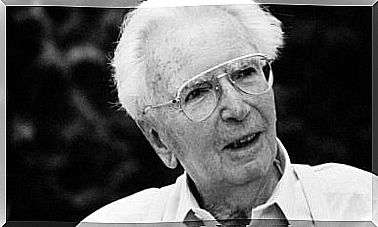Eclecticism In Psychology: Definition, Types And Application

Eclecticism is an open and inclusive form of psychotherapy. It is about choosing methods and techniques from different schools of thought to produce positive results in a specific case. For example, therapists often use methods from both behavioral and cognitive perspectives to treat depression.
Eclecticism is tailored to the unique needs of each specific client, depending on the problem and goals of treatment. Use a variety of methods and techniques from various approaches to determine the best combination to help the client.
Therapists who specialize in some therapy also use other techniques in certain situations. The therapist must be familiar with the evidence-based techniques used in different types of therapy that have been shown to help with specific problems.

Types of eclecticism or integrative movement in psychology
Early eclecticism was often criticized for its lack of an underlying theory and the absence of formal guidelines to help counselors make decisions.
In response, more formal models of integrative psychotherapy were developed, and today four general pathways to integration are recognized : common factors, technical eclecticism, and theoretical integration.
The Common Factors Path to Integration identifies the core ingredients shared by most forms of psychotherapy. The advantage of common factors is the emphasis on therapeutic actions that have been shown to be effective.
Jerome Frank and Julia Frank discussed cross-cultural approaches to healing and identified the following common factors:
(1) An emotionally charged and trusting relationship with a person who helps.
(2) A healing environment.
(3) A rational conceptual scheme or myth that provides a plausible explanation for the client’s symptoms.
(4) A ritual or procedure that requires the active participation of the client and the therapist and that both believe is the means of restoring the client’s health.
Technical eclecticism
This trend of the integrative movement focuses on the selection of therapeutic techniques and procedures regardless of the theory that originated them.
It is characterized, therefore, by a strong emphasis on the technical to the detriment of theory. Techniques are stripped of the theoretical assumptions that have generated them.
Intuitive technical eclecticism
It consists of selecting techniques in an idiosyncratic way, according to the therapist’s judgment, from his intuition or previous experience. Various forms of intuitive eclecticism have been proposed, but none of them have generated enough empirical research to be validated.
Systematic technical eclecticism
The techniques are selected according to a basic scheme that indicates which ones to use depending on the type of clients. The best known model of systematic technical eclectic psychotherapy is Arnold Lazarus’ multimodal therapy.
Larry Beutler’s model of systematic treatment selection represents another model of systematic technical eclecticism.
Pragmatic technical eclecticism
The pragmatic technical eclecticism selects the techniques having as essential and exclusive criterion the level of effectiveness that they have demonstrated in their empirical contrast. The model that best represents this aspiration is that of modern behavior modification (or therapy).
Orientation technical eclecticism
In technical eclecticism, techniques of diverse origin are combined depending on the client, but always according to the conceptualization that is made from a particular theoretical orientation.
An eclectic attitude is adopted regarding the techniques to be used without abandoning the theoretical framework of origin. Beck’s cognitive therapy is a good example of this type of approach.
Theoretical integration
In this approach , two or more psychotherapies are integrated in the hope that the result of this fusion will be better than each of those that started. The emphasis is placed on the integration of the theoretical concepts of psychotherapies, although the techniques are also integrated by virtue of this theoretical synthesis.
Attempts at theoretical integration have largely focused on the combination of psychoanalytic and behavioral approaches. In the 1950s, in the context of the approach of some Yale academic psychologists to psychoanalysis, the first really significant contribution in this line was made by Dollard and Miller (1950).
Hybrid theoretical integration
Hybrid theoretical integration combines theories and practices corresponding to two established therapeutic approaches. Normally, one starts from two approaches that are considered complementary.
An attempt is made to select the most useful theoretical aspects and techniques of each one in a common hybrid theoretical framework. Currently the approach that best represents this hybrid approach is Paul Wachtel’s cyclical psychodynamic therapy.
Broad theoretical integration
Broad theoretical integration differs from hybrid not only by contemplating more than two theories, but by articulating different aspects of human functioning such as cognitive, emotional, behavioral and interpersonal. These integrative proposals combine a wide range of approaches and draw on the contributions of many psychotherapies.
An example would be the holistic psychotherapy of Rosal and Gimeno (1989). This therapy meets the requirements of broad integration by combining contributions from authors as diverse as Assaglioli, Maslow, May, Moreno, Perls or Rogers, among others.

Future directions of eclecticism
Eclecticism has become popular, but there are still obstacles to its growth. The biggest of these is the difficulty of converting these approaches into manualized treatments. These types of treatments have efficacy supported empirically by randomized clinical trials.
Integrative treatments, however, are difficult to manualize and are not consistent with the idea of random assignment to structured treatment protocols. Eclecticism is likely to continue to be an important movement, but it needs more empirical research to prove its usefulness. It’s about balancing research evidence and clinical wisdom.









